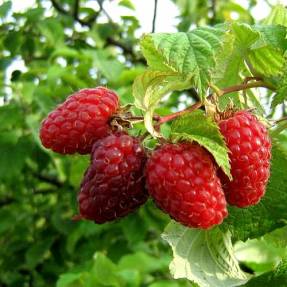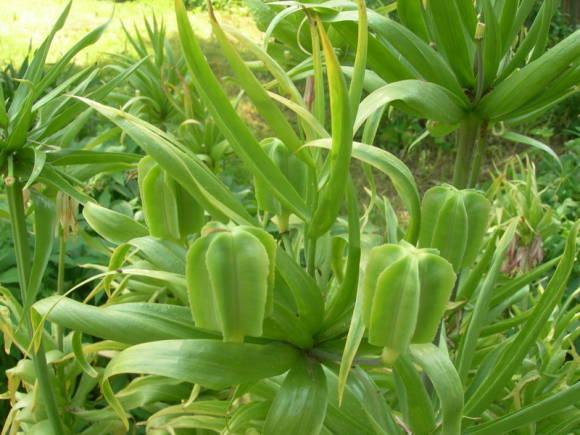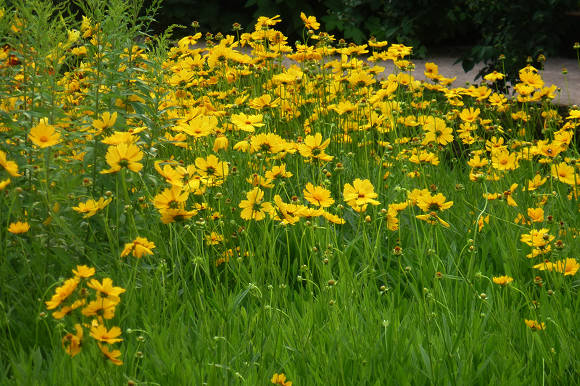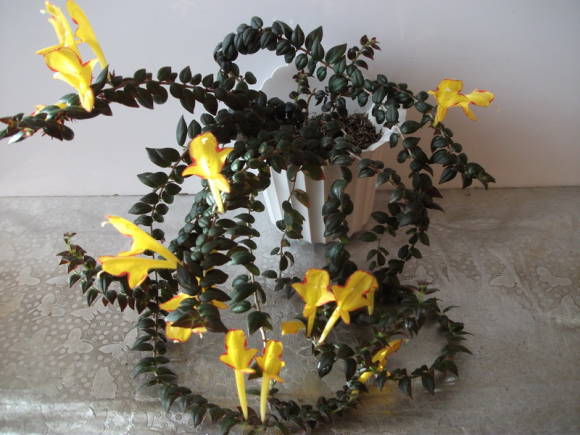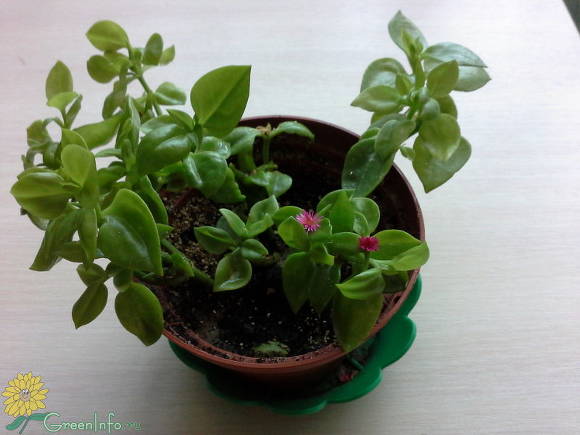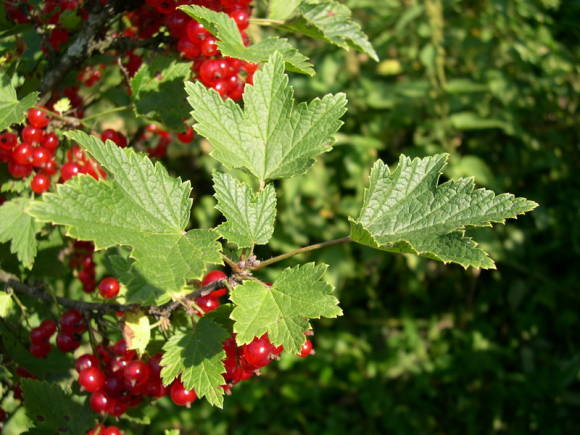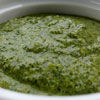 |
Balsamic tansy (Tanacetum balsamita,Tanacetum balsamitoides) is a perennial plant of the Compositae family that has numerous names. The most common local names for balsamic tansy in the territory of the former USSR are kanuper (a word with many pronunciation options: kanufer, kolufer, kalufer, etc.), as well as Saracen mint and balsam ashberry. Somewhat less often, you can find other popular names - odorous tansy, fragrant nine-strong, field ash and Shpansky chamomile. Under the name kanuper, this plant appears in Gogol's "Evenings on a Farm near Dikanka", where the heroes of the story argue whether to put kanuper in pickled apples. For more than three millennia, a popular vegetable, medicinal and aromatic plant known in culture, being a species of the genus of tansy, after common tansy, is the most widespread and popular plant of this genus.
In the wild, balsamic tansy is found in the subalpine meadows of the Caucasus and in Asia Minor and Iran and is called by botanists. balsamic pyrethrum, then balsamic tansy(Pyrethrum balsamita, syn. Tanacetum balsamita)... In botanical literature, both names are usually referred to as a wild species and a cultivated variety. However, outwardly and in smell, these plants are very different.
 |  |
Balsamic feverfew, more precisely the wild form of the plant, has narrower leaves, almost white from pubescence and with a strong camphor smell, and baskets with white marginal flowers. The general inflorescence is not corymbose, as in the cultivated form of balsamic tansy, but paniculate, as a rule, with a few baskets.
Balsamic tansy has no marginal flowers, baskets are collected in more or less dense shields, often up to 60 baskets, leaves are less densely pubescent, bluish. The smell is not harsh, pleasant. They also bloom at different times. In addition, balsamic feverfew is perfectly propagated by seeds and gives self-seeding, and balsamic tansy in the middle lane, as a rule, does not give seeds.
Only the cultural, tongueless form appears under the name canoper. The form with marginal ligulate flowers is bred only as an ornamental plant and is practically not used in medicine and cooking. It blooms in July-August, is elegant and is used for planting in open areas with any soil. Both forms have heavy stalks that fall under their own weight and need a garter.
Canuper has long been cultivated in the past, especially in southern Russia and Ukraine. It first appeared in culture in Ancient Greece, then it was grown by the Romans, who carried it to all their colonies, right up to Britain. Kanuper is also mentioned among 72 species of plants that must be grown in the monastery gardens, indicated in Charlemagne's “City capitulary”, created in 800. Balsamic tansy occupied an honorable place in the second ten. This contributed to its massive and widespread distribution. In the Middle Ages, balsamic tansy became almost an official monastery and garden plant for respectable gardeners. In the monastery gardens, the monks cultivated canuper as a medicinal plant. It was used as a stomach remedy, for colic and spasm, as an anthelmintic. Canoper was extremely popular in Europe until about the middle of the 19th century, then its cultivation almost disappeared. In Russia, it has been reliably known since the time of Alexei Mikhailovich, who grew it in the Izmailov gardens. Peter I also loved Canuper, who was on the list of plants required for the establishment of both the St. Petersburg and Moscow Apothecary Garden (future Botanical Gardens), and from there, in turn, transplanted into the Summer Garden and the lower park of Peterhof.
In the southern provinces of Russia, balsamic pyrethrum with white reed flowers, which penetrated from the Caucasus, has long been bred.
Application
Canuper is used as a spice, medicinal, insecticidal, ornamental plant. Canuper was used in home medicine, put in pickles, when wet apples, both fresh and dried, were used to flavor various dishes and drinks, as an additive in salads. In Lithuania, cheeses and curd products are still cooked with canuper. In Germany, it was added along with other herbs to beer to give it a pleasant and somewhat spicy flavor. The mixture of lavender and canuper leaves will repel moths, and it is also stored in the closet to give the linen a pleasant smell. When, together with the settlers, this plant came to North America, the interesting name "biblical leaf" was assigned to the Canuper - the lower leaves with long petioles were often used as a fragrant bookmark for the Bible. It was believed that the strong smell would keep you awake while preaching. Over the years, the entire book often smelled of balsamic tansy through and through. During sermons, it was customary to take out the bookmark and smell it thoughtfully. Among the folk names of the plant in various European languages, you can still find the name of the Virgin, the Virgin Mary, (the most revered saint in the Catholic religion). In southern European countries, kanuper is called "the grass of the Virgin Mary", "the mint of the Mother of God" or "the grass of the holy Madonna." Previously, canoper was also valued as a medicinal plant. In Russia, it was used as a gastric remedy, for colic and spasms, as an anthelmintic. He was included in fragrant gatherings along with mint, oregano, thyme. Olive oil was infused on the canooper's leaves, which acquired a pleasant aroma and was called “balsam oil”. It had a strong antiseptic effect, it was used to lubricate wounds, but balsam oil had a particularly effective effect on bruises. Leaves and powder from them were applied to the wounds. In his famous "Botanical Dictionary" (1878) N. Annenkov reports that Karl Linnaeus considered canuper an antidote to opium. Later, this action was not confirmed. Kiev City Health Center recommends using Canuper as follows: “It is useful in diseases of the gastrointestinal tract, as a choleretic, antispasmodic agent, has a powerful anthelmintic effect. As an anthelmintic, it has a good effect when used with oregano (or thyme) and mint. Ratio: two parts canuper and one part each oregano (or thyme) and mint. Pour 10 g of the dried collection with a glass of boiling water, leave for 30 minutes and take half a glass twice a day in the morning and evening on a "dry" stomach, that is, an hour before a meal or an hour and a half after a meal (for adults). It also has an antiseptic (wound healing) effect. It is used as a "balsamic" oil externally for bruises, hematomas, wounds. Preparation: Take one part fresh canuper leaves and five parts sunflower oil. Insist 2 weeks in a dark place, strain and lubricate the sore spot 3-5 times a day. There is another recipe (dried leaves of the plant are used). In strong alcohol (preferably 70-degree alcohol), moisten the canooper's leaves and hold for a day. Then the pores open and the plant is ready to release its juices. Then fill with vegetable oil (in the same ratio as in the previous recipe). Then hold it for an hour in a water bath. Strain and use. " In cosmetics, it is used as a tonic for rinsing hair and for washing. To do this, pour a handful of leaves with a liter of boiling water, insist for 10-15 minutes and use a strained infusion. They eat young leaves and stems collected at the beginning of budding (spice in salads, meat, fish soups, vegetable dishes, canned fish, when pickling and pickling vegetables), grass powder with a pleasant balsamic aroma (sweet dishes, confectionery, kvass and other drinks); fruits (spicy seasoning, food flavoring, in pickles, canned vegetables. See the medieval recipe: Baked stuffed eggs with kaloufer and sage. Keep in mind that raw canooper leaves taste bitter. After drying, the bitterness disappears and only then they are used as a spice.The collected leaves are dried by removing the stalks, in the shade under a canopy or in a room, then ground into powder. During the budding period, the plant can be cut completely at a height of 15-20 cm, dried, separated from coarse parts and grinded. In cooking, they are used for aromatizing marinades from vegetables that are neutral in taste - zucchini, zucchini, squash, soaking apples and other fruits, for preparing especially fatty meat: pork, lamb, poultry (geese, ducks). In this case, you can use fresh leaves, light bitterness helps to improve the digestion of these products. Vinegar is infused on dry canuper leaves, acquiring a balsamic aftertaste. To do this, take 4-5 leaves in a glass of wine vinegar, insist in a warm place for 7-10 days. For a stronger smell, you can then remove the old leaves and repeat the infusion with new leaves. Growing a canooper, even in the middle lane, is not difficult. The only thing that this plant really needs is a bright place. Canuper is a perennial herbaceous rhizomatous whitish-pubescent plant with a pleasant odor, numerous, erect or ascending, simple or branched stems in the upper part, 50-120 cm high.Leaves are light green, oblong-elliptical, dentate, lower and middle - petiolate, the upper ones are sedentary. Flowers are yellow, tubular (rarely formed and white ligulate), in small baskets forming a corymbose inflorescence; bloom in August-September. Fruits - achenes; are not always tied. Wild pyrethrum has balsamic inflorescences with white ligulate flowers up to 5-10 cm long, collected in loose corymbose inflorescences. Achene fruits up to 2.5 mm long. Canuper in the wild, with marginal flowers, has a higher growth rate of the bushes and can turn into a rhizome weed, although it does not compete very well with other perennial weeds. The cultivated form grows in one place up to 10-15 years, not particularly greatly increasing the diameter of the bush. For reproduction, the division of the bushes is used in early spring or early August. Later, they take root poorly and may die in winter. Almost any soil can be tolerated, but not damp and without stagnant water. The wild-growing form can be propagated by seeds, which are sown in April or before winter. Bushes bloom from the second year. It does not require care, except for weeding from the largest perennial weeds, it can easily put up with small ones. The same applies to the cultural form. It should be noted with regret that since the beginning of the last century, balsamic tansy has been undeservedly forgotten and almost left the culture, although to this day it is a useful, unpretentious and interesting cultivated plant.

Medicinal properties
Food use
Growing

